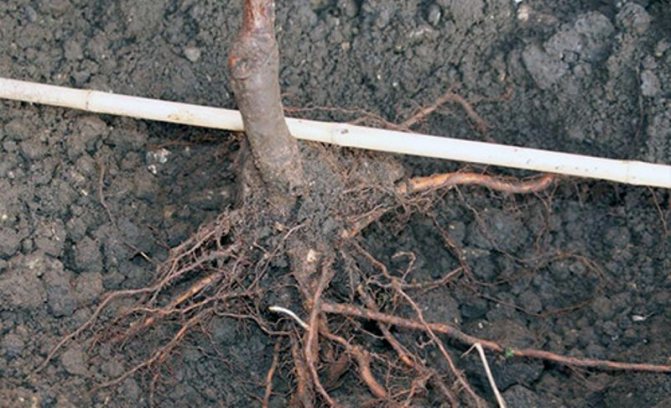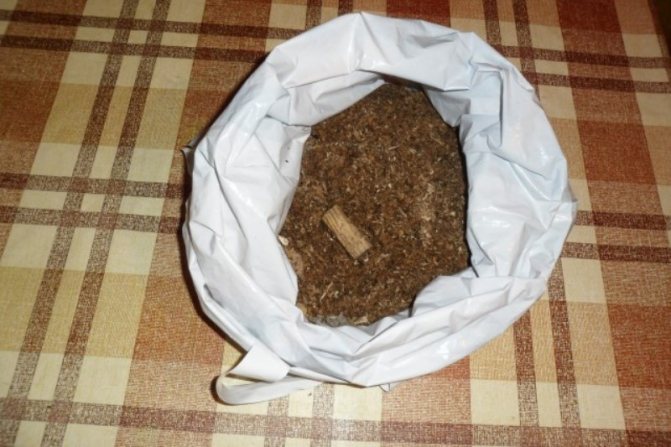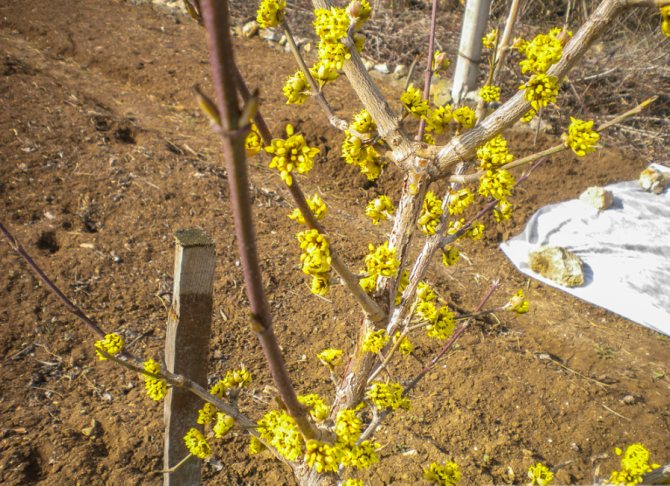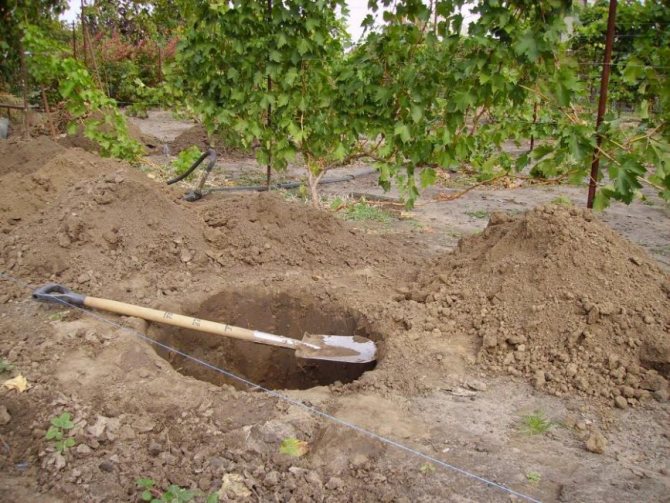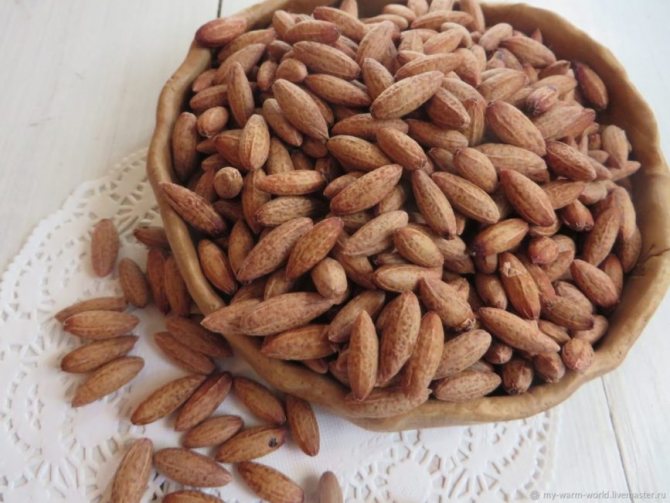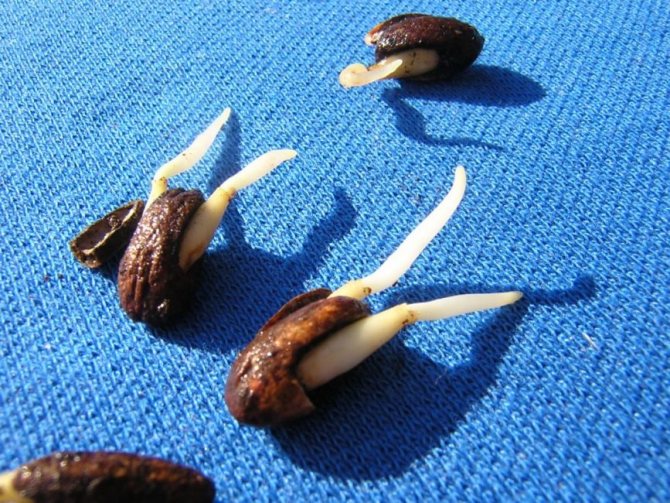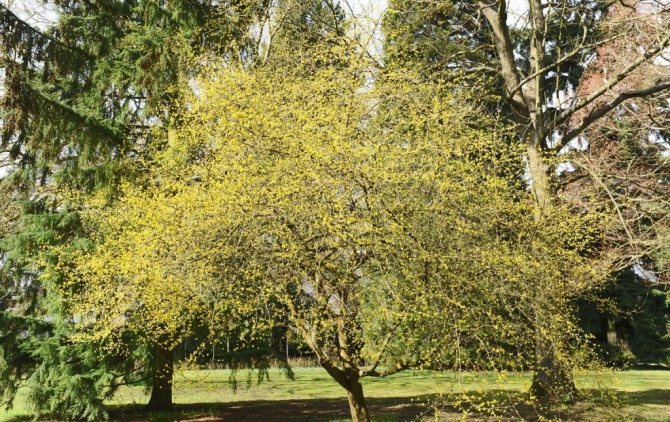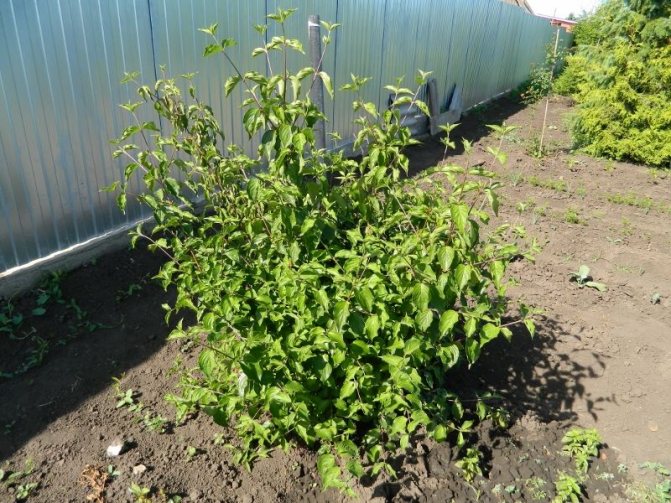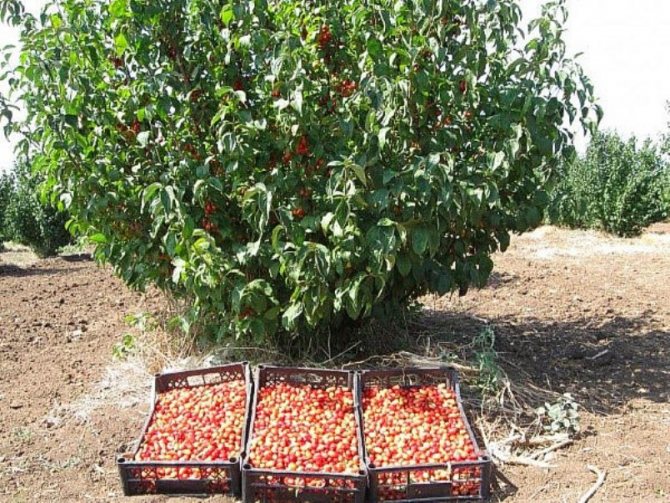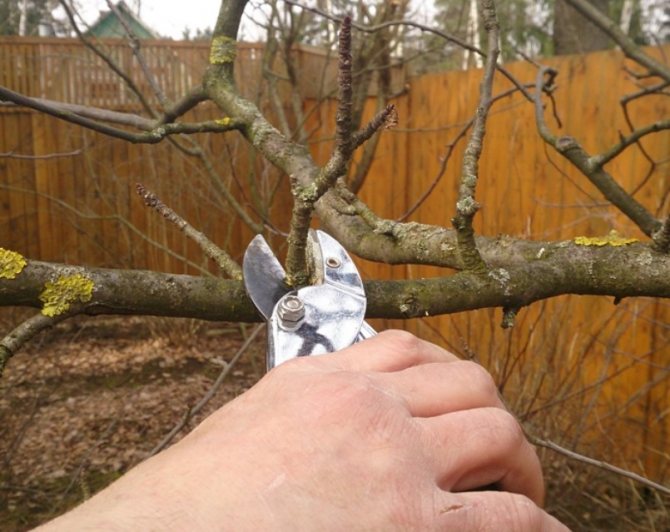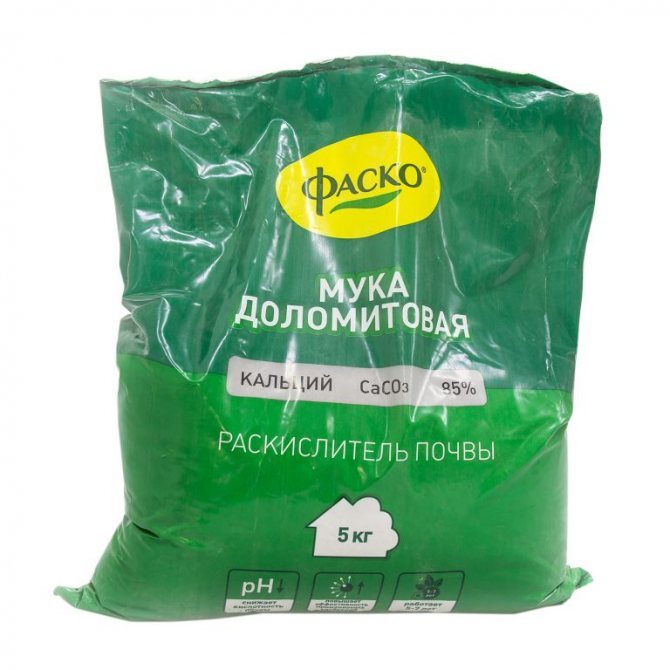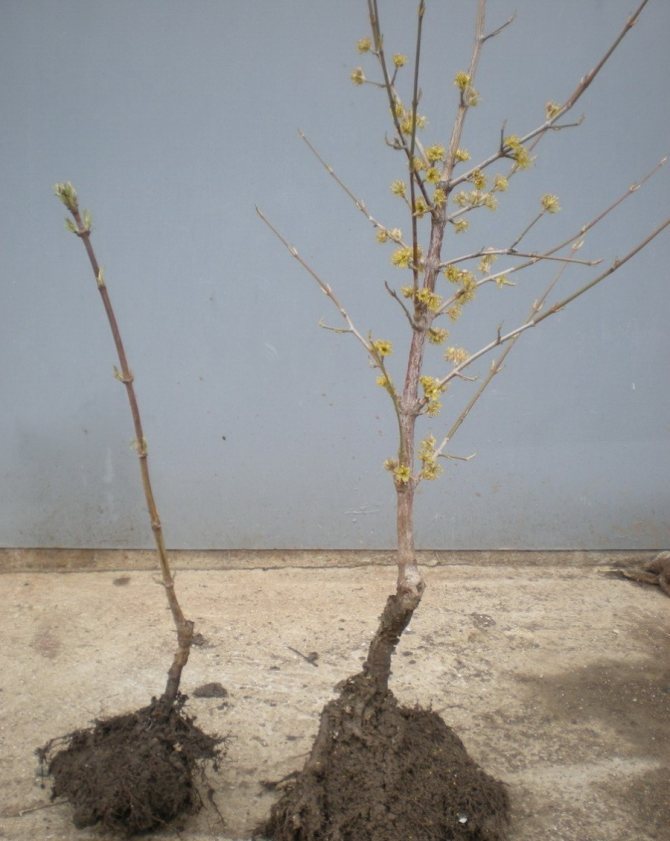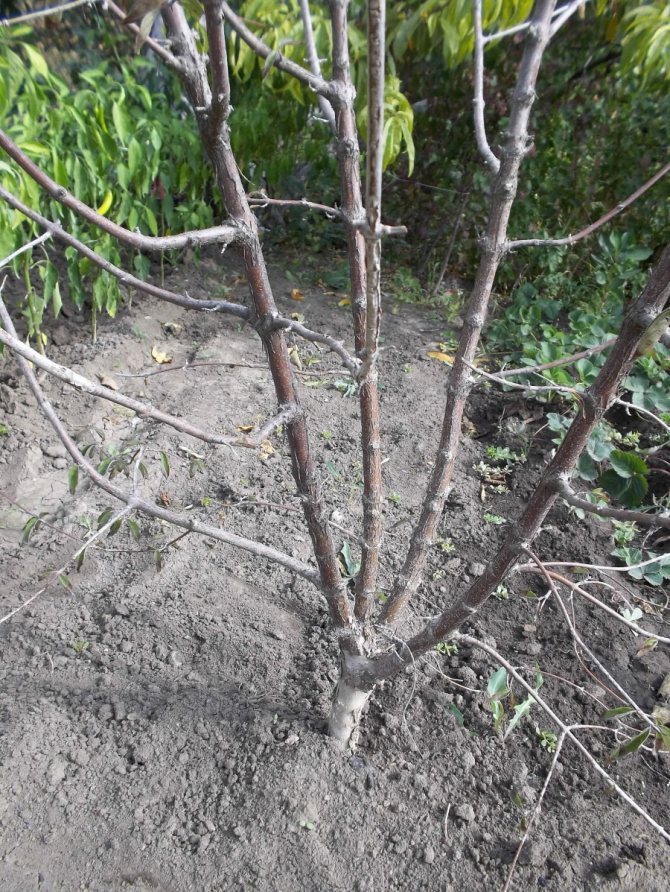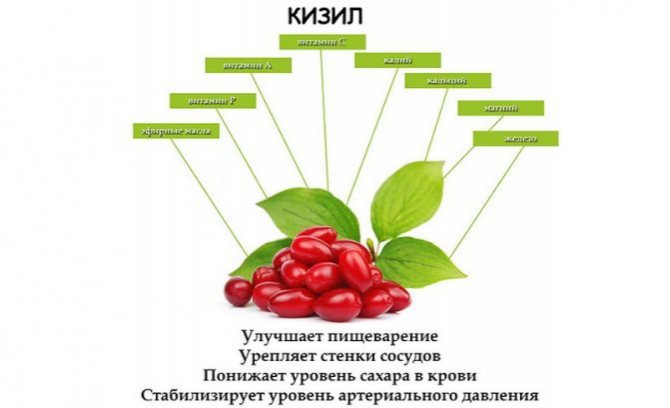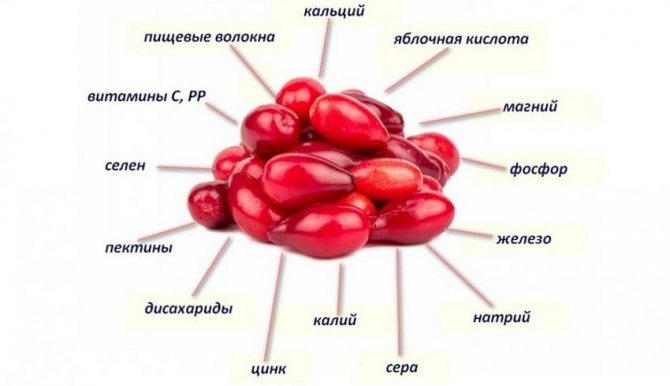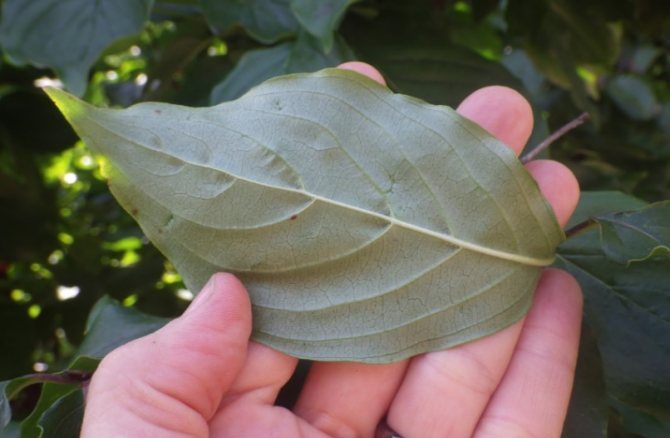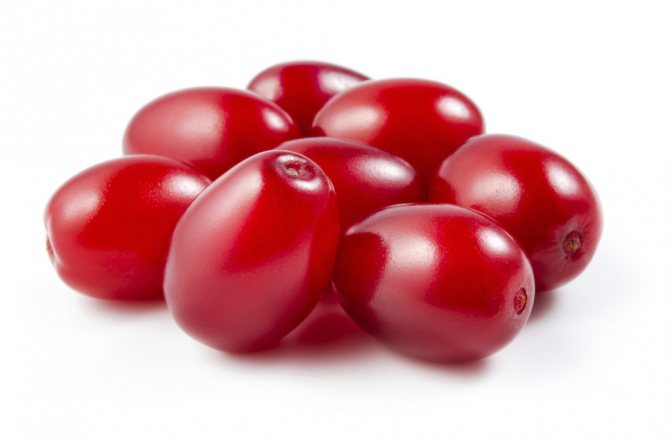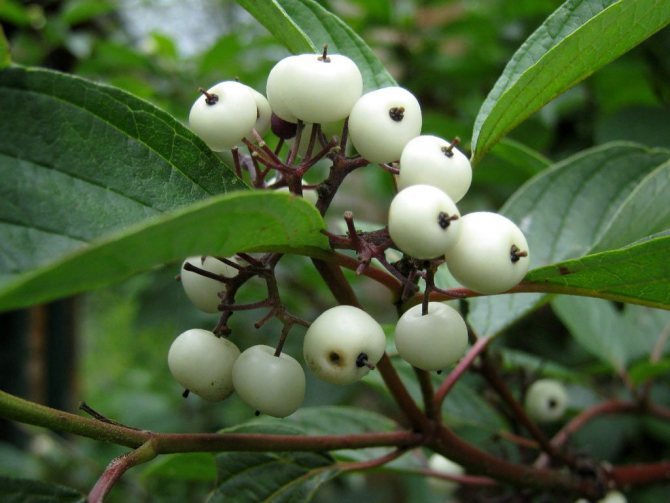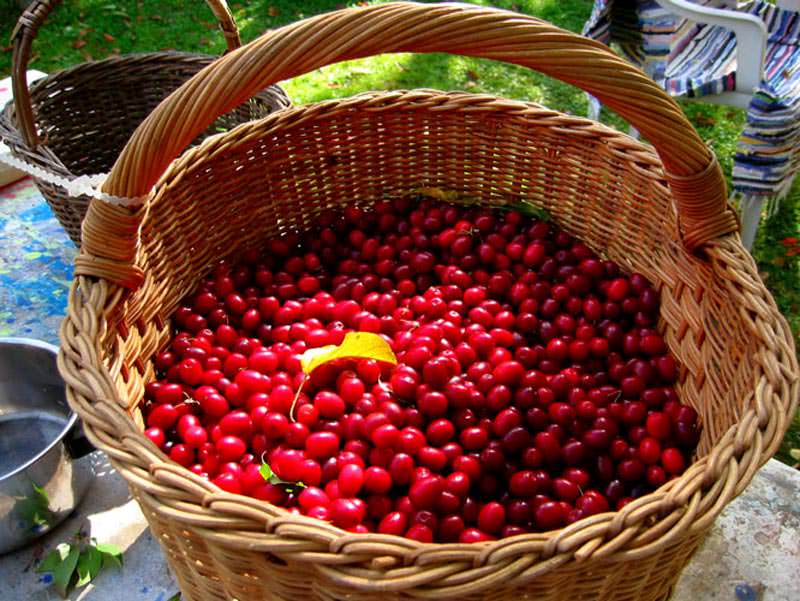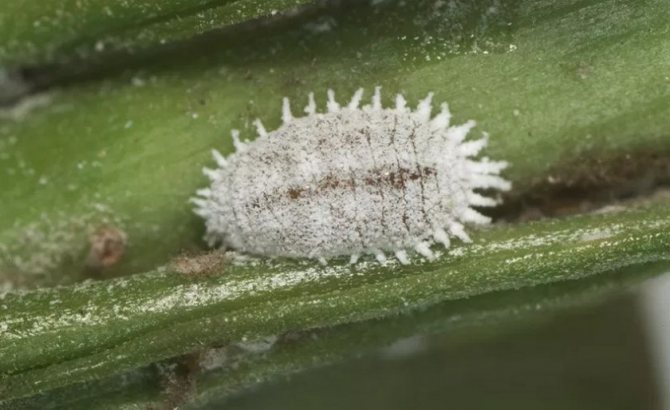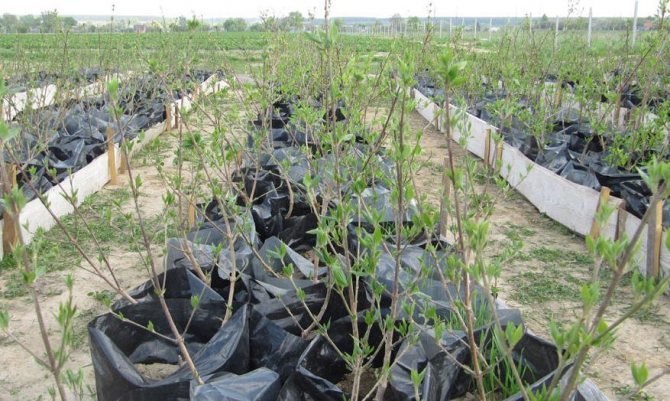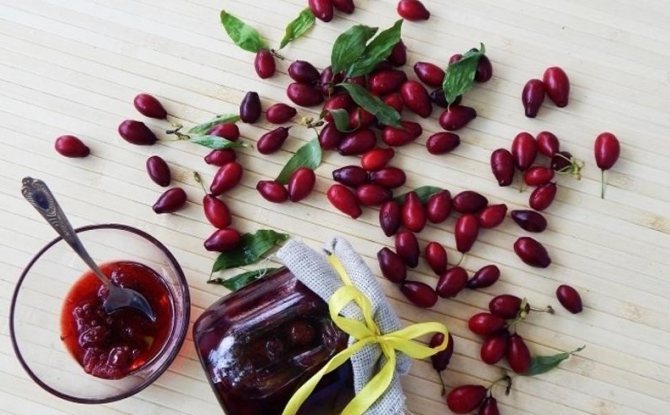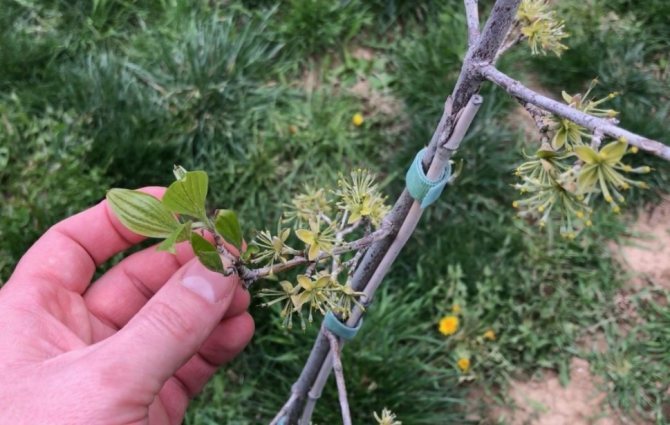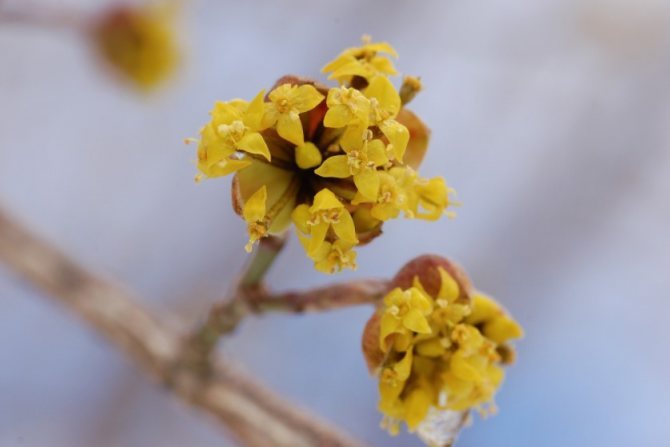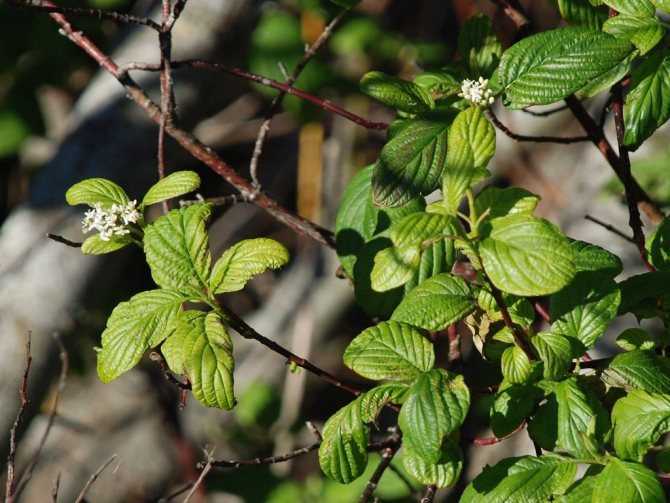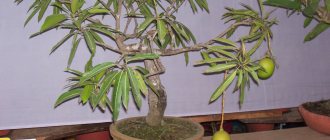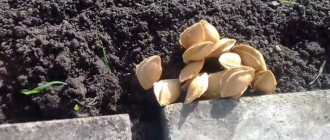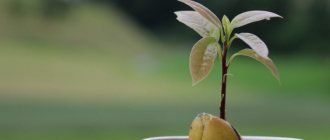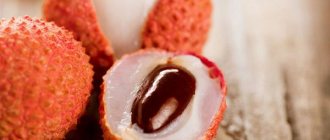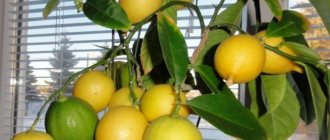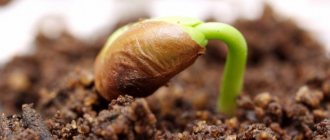
There are several ways to propagate dogwood: seeds, layering, dividing the bush, root suckers, and grafting. Subject to all the rules and a clear sequence of actions, any method will bring excellent results. To begin with, you should study the details of each method and choose the option that is more acceptable for yourself.
How to choose the right seed?
You do not know which dogwood seedlings to buy? Then you need to familiarize yourself with the following recommendations. When buying seedlings, you need to pay attention to the condition in which they are rhizomes: they must be free of signs of disease; preference should be given to seedlings on which there are two or three main root branches, the minimum length of which is 25-30 cm; rhizomes must be moist and not windy; the bark should not be shriveled, and the branches should not be whole and strong.
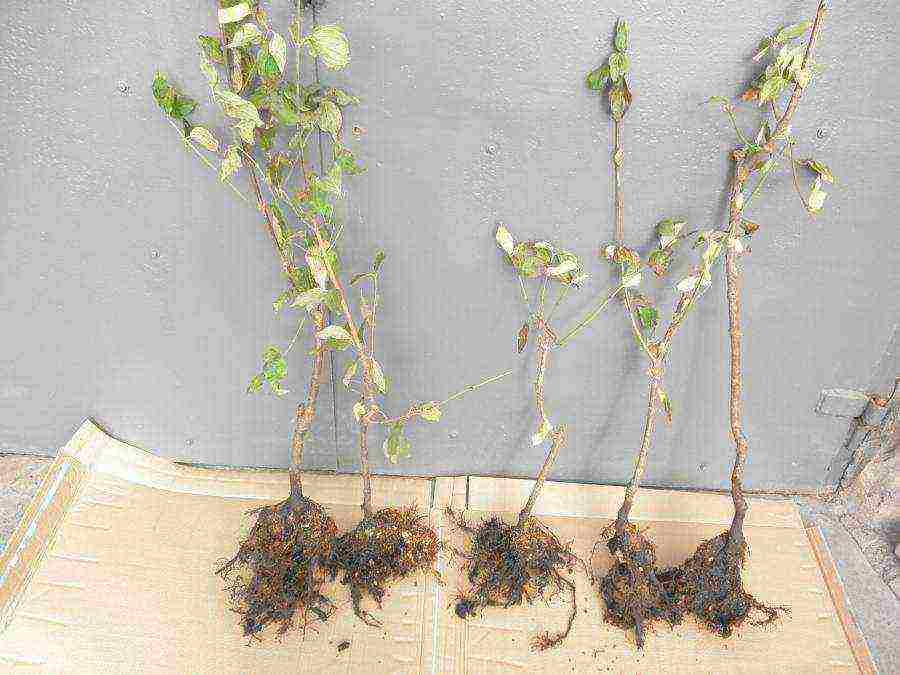

How to grow dogwood. Photo Recommendations: in order to determine whether a seedling is suitable for planting, it is necessary to cut a part of the bark. If the trunk is green under the bark, then it can be planted, if it is brown, it is impossible. If the purchase of seedlings occurs in the fall, then it is recommended to carefully remove the foliage on the branches. In this case, care must be taken not to damage ovary... Recommendations: so that the roots do not dry out during transportation, it is necessary to wrap them with a damp cloth and put them in a plastic bag. If the roots of the seedlings are very dry, then they must be immersed in the liquid for a maximum of two to three days. It happens that the acquired seedling cannot be planted immediately. In this case, it is recommended to bury it in the shade. To do this, do the following: Dig a slightly elongated groove, shallow in depth. At the same time, it should be tilted to the south. The seed must be placed in the pit at an angle. The plant is covered with a substrate in such a way that all the roots and half of the seedling are covered. After that, the shrub must be watered abundantly. In this way, the seed can be stored for one month.
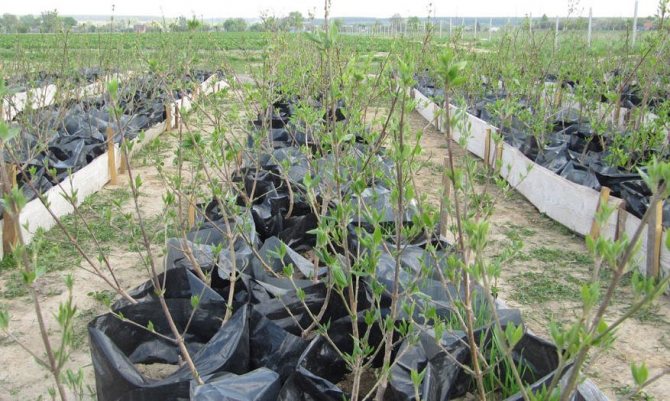

The preparation of the planting material is as follows: it is necessary to remove all broken, unhealthy, dry rhizomes and branches; so that the roots of the plant do not dry out, it is recommended to coat them in a clay mash before planting.
Plant propagation methods. How to grow dogwood and propagate it?
It reproduces quite well and can be done in 4 different ways:
Layers
This method is the easiest and consists in the fact that young one-year or two-year-old shoots are bent to the soil and fixed, and a little soil (7-10 cm) is poured on top and periodically moistened.
The whole process of emergence of roots takes about 1 year. In the fall, a young seedling is separated from the mother bush and transplanted to a new place.
Cuttings
For reproduction, take green cuttings from annual shoots in the middle of summer. All the leaves are cut on them by 1/3, and the cuttings themselves are soaked for at least 5 hours in the root, or in any other similar preparation.
After soaking, the cuttings are planted in a prepared, slightly darkened place; by the end of the growing season, more than half of them take root.
For already lignified cuttings, the material must be taken in the fall and stored in the refrigerator until spring. Before planting in the ground, they are placed in a solution that stimulates the formation of roots.
They take root closer to autumn, but are very sensitive to soil drying out.
Vaccination
The method is suitable for varietal dogwood in natural conditions. For grafting, you need to find healthy strong seedlings of a wild bush. In spring, the grafting takes root poorly, therefore, autumn budding is more often used.
The technique is the same as for other trees. With successful budding, the leaf petiole does not fade for up to 2-3 weeks, and then disappears. After 30 - 40 days, the harness is removed, and in the spring above the growing scion, the stock is cut off on it. Gradually cut off all the shoots of the stock.
Seeds
The most difficult and time consuming process. Germination takes a long time, it is difficult, and seedlings begin to bear fruit late (at 8-10 years old). If it is nevertheless necessary to grow a shrub from seeds, they take seeds from green berries and plant them immediately in the chosen place.
The planted seeds are watered abundantly, and seedlings should be expected in the spring. If you take seeds from ripe fruits, it will be necessary to perform scarification and stratification.
These two techniques will help to shorten the germination period, but they require skill and knowledge so as not to damage the fragile embryo when cutting the shell.
Planting dogwood
Plants that are one to two years old are suitable for transplanting. Planting dogwood is carried out in holes, the size of which should be such that the rhizomes can be evenly located in it. A pit is considered more suitable size, the depth of which is 30-50 cm. The minimum width in diameter should be 40 cm. The plant does not tolerate stagnant water, therefore it is necessary to lay on the bottom of the pit drainage layer 10-15 cm thick. Pebbles, gravel or expanded clay can be used as drainage. It is recommended to put in each hole fertilizer... For these purposes, use the following mixture: humus - 1 bucket; superphosphate - 0.2 kg; ammonium nitrate - 0.05 kg; wood ash - 0.250 kg.


All ingredients must be mixed with a regular earthy substrate. After that, the hole is covered with the resulting mixture by a third. Next, you need to lay ordinary earth to half the volume of the hole and pour out a bucket of water. When it is absorbed, you can start placing the seedling. The seed must be placed in the middle of the hole in such a way that the root collar is deepened by two to three centimeters. After that, you need to carefully spread the roots. It is important that emptiness does not appear at the same time. When the seedling is correctly positioned, it is necessary to fill the hole with an ordinary earthen substrate. Next, you should trample the soil a little. After that, water again and mulch the ground. For these purposes, organic matter can be used. Mulch is poured five to ten centimeters thick.
Dogwood care
Competent plant care consists in the timely application of fertilizers, pruning and regular soil treatment. With the onset of spring, be sure loosen priming. Then this is done five more times during the summer and once after harvest. Then produce mulching soil with organic substances. Watering can be carried out by the following methods: pour water into the depressions; in the holes located around the seedling. Under one bush, you need to pour an average of two to three buckets of water. When watering, it is necessary to take into account the age of the plant, the soil and the degree of moisture.
Top dressing dogwood
For a bountiful harvest and good growth, fertilization is necessary every year. The following mixture can be used as fertilizer: ammonium nitrate - 0.03 kg; humus or compost - one bucket.


Recommendations: every year at the beginning of summer, it is necessary to pour 10 liters of fertilizer from water and fresh mullein under each adult plant in a ratio of 1: 5. Instead, poultry manure diluted with water at a ratio of 1:10 can be used. It is also suitable as a fertilizer pouring into the top layer of the agrolife soil. Also, every year at the end of summer, 0.5 liters can be poured under each plant. wood ash... After harvesting, it is recommended to apply 0.1 kg of superphosphate fertilizers.
Frequently asked Questions
You can often hear the questions: "How to grow a dogwood?". Our gardener answers this and other questions. Illona writes to us the following: “Good afternoon. I need advice. I can't figure out how to grow a dogwood. I have two dogwood bushes. Moreover, they have been growing next to each other for several years. I also have an apiary on my garden plot. But the most interesting thing is that the ovary does not linger on my plants. Once, however, one berry remained at the very bottom. But it was stolen either by insects or by pets. Soon the bushes will bloom again. I'm thinking of wrapping them in agrotechnical cloth. Maybe, in this way, I will be able to create a microclimate that will help preserve the ovary. Do you think this will help or not? " Answer: “For a plant to be pollinated, several conditions must be met: the presence of bees, wind, sunny weather and a pollinator tree. I believe that in your case it is necessary to do the following: Plant another dogwood of a different kind. To attract more insects, it is recommended to spray the plant with a weak honey solution during the flowering period. It is best to wrap the tree with agrofibre at night. And then, this must be done if night frosts are predicted during the flowering period. For pollination, such a wrap will not help. It is necessary to remember the following: the plant should bear fruit only for 7–8 years; dogwood does not bear fruit in clay soil ”.
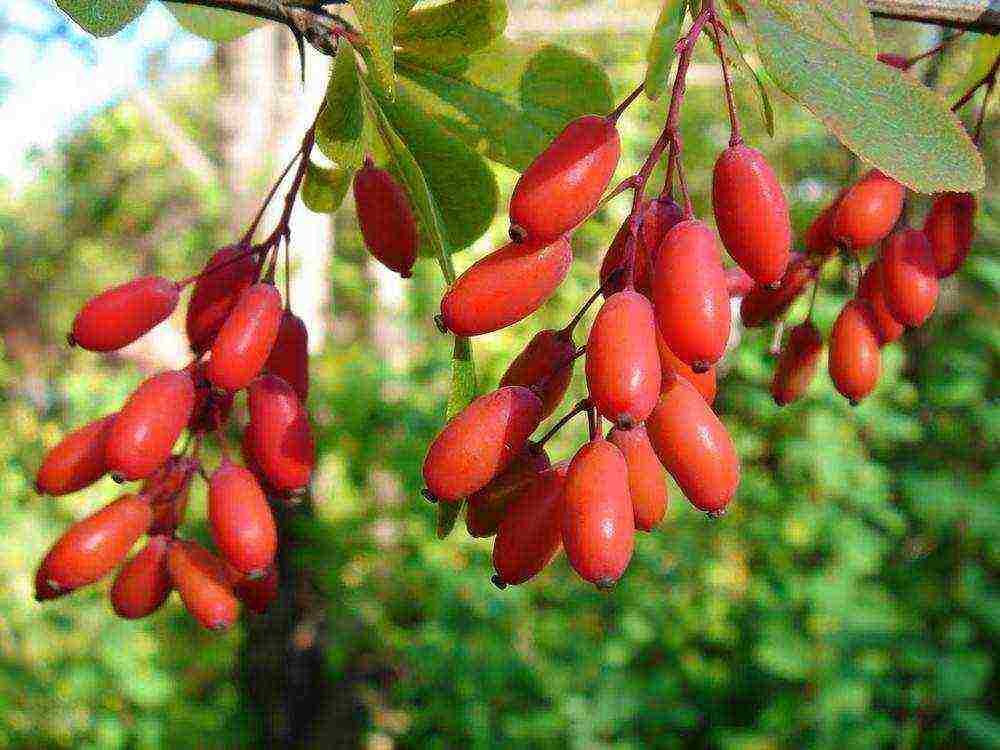

Julia asks: “Tell me, please. About three years ago I planted two dogwood bushes. They started without any problems, but for some reason they grow very slowly and do not bloom. What should I do?". Answer: “Pay attention to the soil. The plant will not grow in clay or in full shade. It is necessary to transplant it. And, in general, I want to say that in the first years these shrubs do not grow quickly. Most likely it is too early for your plants to bloom. Very often, dogwood begins to bloom in seven to eight years, if the plant is not an early variety. " Igor asks: “I recently bought a dogwood seedling. The seller told me that I still need to buy a sexton. Explain to me what it is? Is it really necessary? After all, it stands the same as the seedling itself. " Answer: “Usually these plants are planted in pairs. Of course, self-pollinated species have been bred to date. But I often hear from people that these varieties do not always bloom. I would recommend that you buy a second tree anyway. With its help, pollination is guaranteed. The sexton can easily be the second plant. "
Useful properties of dogwood berries for health
The benefits of dogwood for the human body have been known for several centuries. The beneficial effect of berries, preparations from them on the body is multifaceted:
- They normalize blood pressure, inhibit the development of sclerosis.
- They remove toxins, therefore they are used in case of poisoning or their risk.
- Tea made from bark or pulp relieves inflammation (including joint inflammation), heals colds.
- Normalize fat, water, salt metabolism, which accelerates weight loss.
- Increase the concentration of hemoglobin, reduce sugar.
- They restore the functions of the liver, kidneys, strengthen the walls of blood vessels, increase the production of secretions by the pancreas.
- Treat eczema, rashes, and other skin conditions.
- Eliminate indigestion, heartburn, increase the acidity of the stomach.
Dogwood berries are endowed with the ability to strengthen the immune system, increase appetite, and therefore are useful for children.
They are prescribed for obesity, anemia, anemia, diabetes mellitus.
Cornel for diabetes
Cornel is useful for diabetes or predisposition to it. Berries neutralize the effect of sugar, do not raise the concentration of glucose in the blood. They activate the work of the pancreas, which facilitates digestion. For those suffering from diabetes, diluted fresh berry juice will be useful:
- It is squeezed out of fresh washed berries, water is added (about 1/7 of the volume).
- If the acidity is not increased, it is not necessary to dilute the drink with water.
- The initial course of treatment (10 days): drink half a glass three times a day half an hour before meals. After a week break, you can continue.
- If the body reacts calmly, the dosage is doubled.
It is a folk remedy useful for lowering blood glucose levels. In the case of type 2 diabetes, the use of compote, infusion, decoction of fresh berries is simply necessary.
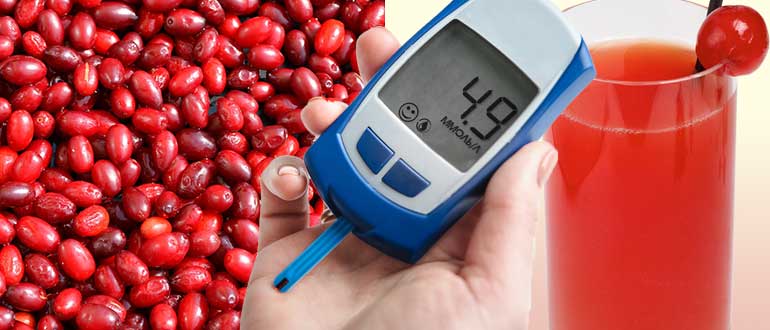

The benefits of dogwood for weight loss
The properties of dogwood are useful for people seeking to get rid of extra pounds. All thanks to the symbolic calorie content of berries. They also help the gastrointestinal tract process other foods. It is more useful to use a decoction or compote. The drink is prepared as follows: 150 grams of berries are boiled for a couple of minutes in 1.5 liters of water. Sugar-free (it is permissible to add a little honey). Caution is required in the elderly.
Is it possible to dogwood during pregnancy and breastfeeding
It is possible and necessary. Berries are packed with beneficial nutrients, the value of which is invaluable:
- The berry supports the mineral and vitamin balance, strengthening the immune system.
- Saturates the blood with iron, preventing anemia and fatigue.
- Normalizes digestion, preventing constipation - a problem for most pregnant women.
- Able to slow down or overcome infection, colds, acute respiratory infections, high fever.
- Replaces medications that are undesirable during pregnancy or breastfeeding.
From the age of three months, babies can be given dogwood broth. The child will get stronger, will digest food without colic or frustration. His bones will grow faster, become stronger. The main thing is not to be zealous. Start with a couple of berries for yourself and a couple of drops of juice for the child, observing the reaction of the child and his body.
The benefits of dogwood berries
In one berry, there are many substances necessary for health: fructose, glucose, organic acids, nitrogenous and coloring substances, essential oil, vitamins C and P and phytancides. The harvest from this shrub is allowed to be consumed with: gout; anemia; hemorrhoids; dysentery; typhoid; diseases of the gastrointestinal tract; joint diseases; skin ailments.
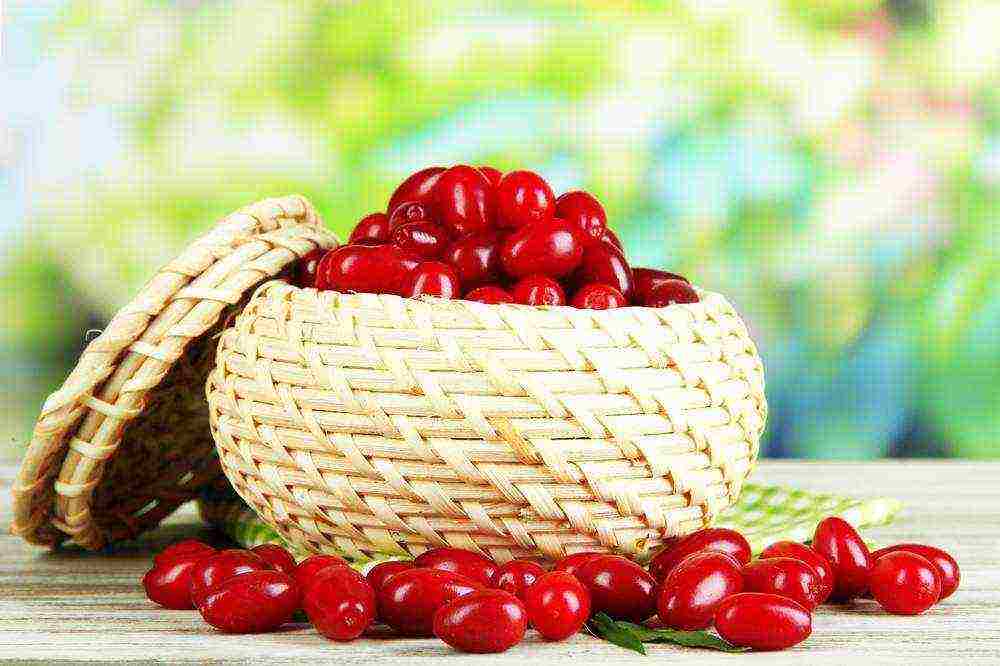

They also have the following actions on the human body: choleretic; diuretic; antiscorbutic; bactericidal; antipyretic; anti-inflammatory. The berries contain pectin, which helps cleanse the body. It removes oxalic and lactic acid. With the help of biologically active substances that are included in their composition, it is possible to stabilize blood pressure, prevent sclerosis, eliminate headaches and stabilize intracranial pressure. Also, the fruits strengthen the walls of blood vessels, make the capillaries less fragile. It is advisable to use it in case of venous insufficiency, inflammation of the veins and edema of the legs. Fruits improve appetite and have a positive effect on the metabolic process in the body.
Chemical composition
The bark, leaves, fruits of the dogwood are rich in vitamins, trace elements, and other nutrients useful to humans. Vitamins: A, B, C, E, R. Macro- and microelements:
- iron;
- potassium;
- calcium;
- magnesium;
- phosphorus;
- sodium.
Microdoses contain selenium, zinc, chromium, fluorine.
Other nutrients:
- glucose;
- tannins;
- fixed oils;
- organic acids (malic, succinic, nicotinic);
- pectins;
- alimentary fiber;
- fructose;
- flavonoids;
- phytoncides;
- essential oils.
Description of dogwood varieties
Dogwood variety Vladimirsky The ripening period begins in mid-August and ends in early September. Fruit sizes are large. The yield is high. On average, one berry weighs about 7.5 grams. The fruits are firmly attached to the branches. Dogwood variety Vydubetsky The fruits ripen on the twentieth of August. The berries are distinguished by their large size. On average, one fruit weighs 6.5-7.6 grams. The berries are well attached to the branches. Variety Coral Stamp The ripening period of this mid-early variety falls on the average on 15–20 August. The berries are pink-orange in color. They can be round and barrel-shaped, similar to cherry plum fruits. On average, the weight of one berry is 5.8–6 grams. Variety Lukyanovsky The variety begins to ripen on average at the end of August. The form of large fruits is bottle-shaped. The berries are dark scarlet, which changes to black as they ripen. The average weight of one berry is about 6 grams. Variety Tender The ripening period will fall on average on August 20-25. The bottle-shaped berries are yellow. The crop can be harvested consistently every year. Variety Glowworm The mass ripening period begins in late August and ends in early September. The firefly is the largest-fruited variety. The shape of the berries is bottle-shaped with a thickened neck. On average, the weight of one fruit is in the range of 6.5-7.5 grams. Growing dogwood. Video The main distribution area of dogwood is southern latitudes (Crimea, Caucasus). But this shrub can successfully take root in other regions, if you plant it correctly and follow the simple rules of care. Dogwood shrub
Harvest time
From the time of the end of the flowering of trees to the ripening of the berries, 100 - 150 days pass. The amount of the future harvest can be seen already at the end of April by the number of ovaries. And in the fall, you can find out how many fruits there will be for the next year, if you pay attention to the flower buds that are formed at the time of harvest.
Also read: Forming the crown of fruit by bending
Harvesting times differ depending on the varieties:
- early (July);
- medium (August - September);
- late (November).
Usually the color of the berries has a red tint. But some varieties (Tender, Golden, Amber, Bukovinsky) are yellow and ripen at the end of August. The earliest yellow-fruited species is the Alyosha variety.


The earliest yellow-fruited variety is Alyosha
Variety selection
Most of the unsuccessful experiences associated with growing dogwood in the country are associated with the wrong selection of varieties. Dogwood is characterized by an early onset of flowering, but a long growing season (up to 250 days). Therefore, in order for the plant to take root in mid-latitudes, you should choose early varieties of dogwood. If the shrub is planned to be planted for harvesting, and not for decorating the site, you also need to pay attention to large-fruited varieties. In the photo, dogwood with red berries The following are considered optimal for summer cottage cultivation: Coral Grade; Cornelian variety Coral Mark Eugene; Vydubetsky; Tender; Kizil Tender Vladimirsky; Cornel Vladimirskiy Cornelian variety Firefly. These varieties are suitable for both amateur and industrial cultivation. Growing success also depends on the type of seedlings. You can get dogwood seedlings in three ways: sowing seeds; cuttings; grafting varieties on the stock. Dogwood seedlings In the horticultural markets, you can find the first, and the second, and the third. Seedlings obtained by the sowing method are the cheapest, but also of the least quality - they yield only 10-12 years after planting. Plants obtained by the method of green cuttings are grown in greenhouses, and retain many more cultural characteristics compared to sowing. They bear fruit for 3-4 years and are more resistant to disease.Saplings obtained by grafting on the stock are considered elite - you can pick berries already in the second year after planting. Organic dogwood seedlings For planting, you should choose two-year-old seedlings, annuals on the soils of the middle lane will not take root. The ideal structure of the seedling is about 1.5 m high, the diameter of the main pillar is 1.8-2 cm, 4-5 skeletal branches.
Cotoneaster pests
This plant is very resistant to pests and rarely gets sick. There are not so many pests that the cotoneaster cannot resist:
- Sometimes on young twigs or from the back surface of leaves, rare individuals of apple aphid can settle. It makes the leaves wrinkle, bend the shoots. Shoots can die from this.
- The tiny apple moth of white color also adores the shrub. It has thin narrow passages inside the leaf tissues. As a result, leaves and branches dry out on the cotoneaster.
- This plant is also affected by the omnivorous scale insect, which can quickly destroy it, damaging the leaves and stems not only on the youngest shoots.
- Sometimes a perennial is also damaged by a cotoneaster mite or a sawfly.
Soil preparation
In its natural habitat, dogwood is able to take root on any soil, but when grown in the middle lane, it feels best on loose soils, with a high location of the aquifer. However, on marshy soils, where groundwater is almost at the surface, dogwood will not grow. The best place to plant is near tall shrubs or trees that will cast partial shade. In the open sun, flower buds of dogwood will not form well. Planting holes for seedlings Dimensions of planting holes for planting seedlings: depth - 0.6-0.8 m; diameter - 0.8 m; the distance between the holes is 3-5 m. Cornelian planting Planting is carried out in the fall, at the end of September-beginning of October. The stake is driven in from the leeward side, and the seedling itself is laid in the ground on the other. The root system is carefully straightened, while making sure that the neck is 3-4 cm above the ground level. When digging a hole, the upper and lower layers of the earth should be laid separately. This is necessary in order to subsequently combine the upper fertile layer with mineral and organic fertilizers (best with humus). After laying the seedling, the upper enriched soil layer is first laid in the hole, and the soil from the lower layer is used for mulching. How to plant a seedling correctly Planting a dogwood seedling With a shortage of area, it is possible to plant seedlings of different varieties in one hole. After being placed in the soil, both trunks are intertwined. Over time, such seedlings will grow into one plant with a thick spiral-shaped trunk, but with two types of fruits. The formation of a plant depends on what you want to get in the end - a bush or a tree. In order for the seedling to grow into a neat tree, the lower shoots are pruned for the first 3-4 years. If the plant is not pruned, a sprawling dogwood bush will form. Some varieties are suitable for the decoration of the site. To obtain a beautiful form of palmette, the skeletal branches are bent and fixed with a rope to the pegs, which are then replaced with trellis made of posts. Experienced gardeners recommend shortening the shoots by a third immediately after planting to balance the root and aerial systems. During the first year, the growth of the seedling does not exceed 0.3-0.5 m, then the plant demonstrates rapid growth, increasing by 1-1.2 m annually. When to cut the dogwood How to cut the dogwood Secondary pruning of the dogwood
Care
Dogwood does not require much maintenance, requiring only regular watering in the first year after planting. The soil is moistened 2 times a week, evenly distributing water around the column. It is not necessary to pour water under the pillar itself, the root system of the dogwood is sufficiently developed to absorb moisture within a radius of 0.5 m. To prevent water from spreading along the ground, you need to dig a furrow around the seedling.If a drip irrigation system is installed on the site, then watering is greatly simplified. In the first growing year, it is necessary to monitor the condition of the leaves: if they begin to dry out and curl, then the plant lacks moisture. Also, during the first 3 years after planting, until the seedling finally gets stronger, you need to monitor the cleanliness of the soil around it. All weeds growing within a radius of 1 m from the seedling must be removed. To improve the air exchange of the layer where the root system is located, it is necessary to periodically loosen the soil up to 10 cm deep. It is more convenient to loosen the soil the next day after watering, with the simultaneous uprooting of weeds. Exhaustion of the soil Top dressing of dogwood is not necessary, but the plant responds very well to them, demonstrating the best yield. Fertilization is carried out in the spring (early spring feeding) and in the fall. In the spring, dogwood is fed twice. Organic fertilizers are applied for the first time. The best option is slurry diluted with water in a ratio of 1/3. This top dressing ensures the formation of the current crop and the simultaneous laying of nutrients for the next season. In the second spring top dressing, nitrogen (40-50 g per plant) and potash (20-30 g) fertilizers are applied to the soil. Growing dogwood Young (before fruiting) 6 g Young (beginning of fruiting) 1 kg 9 g 6 g 9 g Adult (full fruiting) 1.5 kg 12 g 9 g 12 g In autumn, the bushes are fed with organic (8-10 kg per plant) and phosphorus fertilizers.
Planting seeds in open ground
After stratification, the seeds can be planted immediately in open ground. This is possible only at the beginning of May, so that there is a steady warmth. In the area allocated for dogwood bushes, it is necessary to make grooves to a depth of 3 cm and place bones in them.
In order to create a greenhouse effect, which is required for the seeds for good germination, the area with crops will have to be covered with a film, then the soil will not dry out. You can remove it after the dogwood sprouts appear. In the summer, it is necessary to take care of the sprouts, protect them from drying out and excessive moisture, cover them from the sun, because the bushes should become strong by autumn so that wintering passes without complications.
In the first winter, dogwood bushes should be insulated with humus at the very roots. Here, in addition, foliage or spruce branches should be used, with which they are insulated over humus. In early spring, you must first remove the upper part of the shelter, and after a few days, shovel up the remaining insulation and free the entire bush.
Before the buds begin to swell, the grown bush can be transferred to a permanent place of growth, where it will be sunny and spacious.
Although dogwood is unpretentious in terms of soil, it would be better to plant it in fertile soil with good loosening. After planting the bushes, the soil must be mulched with sawdust, peat or cut grass.
Since the main roots of the plant are shallow, it is necessary to provide the dogwood bush with regular watering throughout the summer. It will be very good for a shrub if it is planted in a slightly shaded area of the garden.
In addition to watering, care involves weeding and fertilizing with fertilizers. During the growing season, feed with nitrogen-phosphate, and closer to autumn, introduce potash fertilizers, such as wood ash. Sometimes humus or compost can be used. Dogwood also needs calcium, so you should feed it with lime.
Plant pruning
Correct cultivation of dogwood requires systematic pruning of the plant. During winter or early spring, it is necessary to cut off damaged, frostbite and dry branches from the bush so that they are not attacked by pests and fungus.
When cutting branches with garden scissors, they must be dipped in a solution of bleach in a 1: 3 ratio each time. This is required to prevent the transfer of diseases from possibly infected branches to healthy ones.
It is also important to cut to the very root, or simply shorten old branches to allow young shoots to emerge. Branches and shoots growing inside the bush are also cut out. If the dogwood is grafted, then you will have to cut off all the shoots that have grown below the grafting site. If a bush or tree has a natural beautiful crown, then you should not form it yourself.
Diseases and pests
Diseases or pests affect dogwood very rarely. Often the plant is affected by a fungus - rust. It becomes noticeable only due to the existing brown spots on the leaves.
To get rid of the fungus, you need to treat the bush with Bordeaux liquid. Sometimes the plant is affected by powdery mildew, which can be defeated with colloidal sulfur. Spotting is also possible. They can attack the dogwood and pests, where the snailworm and the multiflorous caterpillar are most common. The worm can be destroyed by treating the bush with lime, and the caterpillar with Parisian greenery.
Cornel is a completely unique plant about which much is unknown. For ease of self-cultivation, interesting facts should be cited:
Cornel can be grown from a seed - although this is a long process, it is quite reliable.
Delicious and healthy fruits are suitable not only for jams and compotes, but also serve as a good healing remedy for many health problems.
»Garden
Dogwood is not often found in our area. But since this plant has unsurpassed useful properties, it is worth considering how to start growing it in a summer cottage.
Planting a dogwood and subsequent care for it is an absolutely not complicated procedure, which even a novice gardener can do. This shrub is unpretentious, and at the same time has delicious berries.
Kizil prefers the warm climate of the Caucasus and Transcaucasia
, where it grows in mountain forests, on sunny edges, as well as in thickets of other shrubs. In addition, it grows in the territory of Ukraine, Crimea, Central and Southern Europe, as well as in Western Asia. On the territory of Russia, dogwood is successfully cultivated in various regions - Moscow region, Krasnodar Territory and other regions.
The beginning of flowering of the common dogwood falls on March, and the end - in April. Fruits ripen closer to the middle of autumn, depending on the region of growth. When the fruits are ripe, they begin to fall off the bush. The ripeness of the dogwood fruit can be determined by taste. The crop is harvested every year in September, and the roots are harvested at the end of November.
.
For long-term storage of berries at home, they are cut off as they begin to ripen. The fruits are placed in small baskets where they ripen.
, and then stored at a temperature of 0 - +2 C.
Nice, sweet and sour tasting with a specific aroma, dogwood fruits are often consumed fresh
, and experienced housewives are in a hurry to buy dogwood to make exquisite jams, jellies, jams, juices, compotes, marmalades, or simply fill the fruits with sugar and store. Also, berries can be saved by freezing.
In its raw form, dogwood berries are stored in a refrigerator (in a plastic bag with holes) for no more than 12 days.
Reproduction
Dogwood can be propagated in different ways: by seeds; root suckers; stock; horizontal and arcuate layering. When breeding seed method fruit pits are stratified. They are placed in moist sawdust and left in this state for 12 months. It is advisable to carry out stratification a year before disembarkation, i.e. in the fall. Stratified seeds are distinguished by good germination, in contrast to dry seeds, which germinate in a ratio of about 50/50. After the first growing year, the seedlings grow only 3-4 cm, but in the second year, with sufficient watering and feeding, they reach a height of 10-15 cm and are ready for transplantation into the nursery.Dogwood seeds Dogwood from seeds When reproduction by offspring root shoots surrounding an adult plant are used as seedlings. She is separated from the main bush and transplanted into the nursery in the fall or spring. When rootstock breeding grafting of 2-year-old seedlings into the root collar or bole is carried out. The grafted dogwood is dropped into a container with a sand-peat mixture to the level of the junction of the rootstock with the scion. The container is then placed in a cool greenhouse or on a stand in a greenhouse. After the junction is completely fused, the plant is planted in open ground. When reproduction by layering shallow furrows are dug in the soil around the adult plant. Young branches are bent down and pinned to the grooves. After shoots up to 12 cm long develop from the buds of the pinned shoots, they are sprinkled with soil mixed with humus. After 2-3 weeks, when the shoots increase by another 10-15 cm, they are sprinkled again. When the pinned shoots take root, they are separated from the mother plant and moved either to the nursery or to the open ground. Propagation of dogwood by layering Propagation of dogwood by cuttings Some gardeners practice dogwood propagation by cuttings, but this method shows a low percentage of rooting (4-6 established plants out of every 10 planted). Video - Planting dogwood Residents of the middle lane know little about this wonderful berry, planting dogwood is mostly familiar to residents of the southern regions. In Crimea and the Caucasus, jams and preserves are prepared from sweet and sour fruits, they are added to many national dishes. The plant is valued not only for its beneficial fruits, but also for its very durable wood. Depending on the preferences of the gardener, cultivation can be carried out in the form of both a tree and a bush.


What is useful dogwood for the body
Traditional medicine has studied and used the beneficial properties of all nutrients of dogwood. This is an indispensable component of the diet for certain diseases.
For women
It's a proven, helpful ladies' ally. In addition to the general effect, the properties of dogwood help to solve purely female problems. All parts of the plant are useful in cosmetology:
- From the pulp of the berries, a moisturizing and vitaminizing mask for the face and hair is obtained.
- The cream, enriched with useful berry extract, tones and moisturizes the skin. At the same time, it unclogs pores, removing dark spots, oiliness, smoothing wrinkles.
- The bark is brewed for anti-inflammatory masks.
- Rinsing with dogwood decoction makes hair strong, silky, relieves itching and dandruff.
- Ground bones are a healthy, wonderful and safe body scrub.
You can add dogwood juice or pulp to a store-bought cream. Berries are endowed with antispasmodic properties, therefore they are useful for women during painful periods.
Why is dogwood unpopular in cold regions?
Dogwood is unpretentious, it does not require complex care. In the southern regions, wild varieties form huge thickets, and the berries are not worse in taste than cultivated varieties. Frost is not terrible for a hardy tree, only the temperature is below -30? can damage its branches. If such phenomena are short-lived, young shoots can be covered, and they will winter well. Unlike fruit trees, which give good yields every 2 years, dogwood does not need rest, it bears fruit every season. Why is such a wonderful plant unpopular with summer residents in the middle lane and in the north? The growing season of dogwood is about 250 days, and it blooms very early. Spring frosts in cold regions can destroy the ovaries, but even if the owners manage to preserve them, the fruits often do not have time to ripen. Breeders are working on solving this problem, species with early ripening of berries have already been bred. Planting and growing regionalized varieties often brings rich yields. The common dogwood blooms when it is still cool outside, the temperature is about +12?. In this weather, bees cannot pollinate flowers.For the wind to transfer pollen from one plant to another, plant at least 2 trees close to each other in the area. Some gardeners believe that the shrub can pollinate itself. Maybe, but the harvest will be very meager. But if you plant a bush of a different variety nearby and provide them with good care, almost all the flowers will turn into berries. Tip If it is impossible to find a place for another tree on the site, plant 2 seedlings of different varieties in one hole. Interlace the trunks and they will develop as one bush and pollinate each other.


Growing dogwood in the Moscow region and the Leningrad region
Cornel is an unpretentious plant and adapts well to climatic conditions. Since the seeds do not germinate well, and young seedlings grow slowly, experts prefer the vegetative method of propagation - stem layering. To obtain a large amount of harvest, it is recommended:
- place different varieties side by side (at least 2);
- choose a well-lit place with low shading.
The amount of harvest depends on the weather conditions during the flowering period of the shrub. Cool rainy or snowy weather can result in no fruit at all. Experts do not recommend purchasing seedlings grown in the southern regions for planting, since they will not tolerate winter frosts.
Place for planting southern shrubs
Cornel is very fond of soils rich in lime, with a neutral or alkaline reaction. It is desirable that manganese is present in the soil, otherwise you need to add it when feeding, this element is necessary for dogwood. He does not tolerate groundwater, the depth of their occurrence should be at least 1.5 m. In low areas, you need to make good drainage, and sometimes even make a fill mound. The shrub does not like crowding, it needs that there are no fences, buildings, other trees or tall shrubs within a radius of 4-5 m. Cornelian cherry is a long-liver, it grows in one place for up to 100 years. Over time, the crown increases in diameter, new fruiting shoots appear. If the planting is too tight, the crown will begin to taper and the yield will decrease. The plant develops well in partial shade, but in the complete absence of sunlight, the harvest will be poor. It is advisable to plant a shrub north of a tall tree. On a sultry afternoon, the foliage will protect the dogwood from the scorching rays, and in the morning and evening it will receive good lighting. If the entire south side is open, tall poles with a clothesline or other temporary structure can be installed.
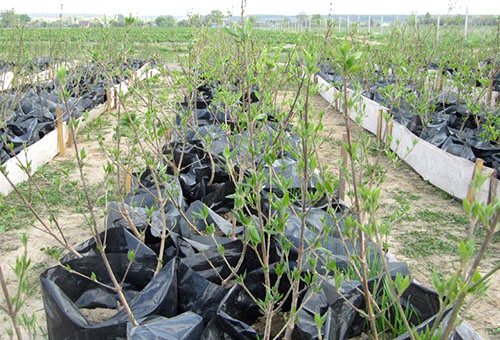

Where to get planting material
Ready-made seedlings can be purchased at nurseries. Two-year-old trees with a height of about 1.5 m take root well. They must have a fairly thick trunk - at least 2 cm in diameter - and 5 main branches. It is advisable to purchase varieties bred in your region, they do not have to adapt to new conditions. If you prefer planting from your own prepared material, you can use one of the methods: planting seeds; layering; cuttings; root suckers; dividing the bush; budding. For residents of the northern regions, where selection varieties of dogwood die from frost, the only way to grow this shrub is to plant seeds. Take seeds from different varieties of fruits, sow them and see how the plants survive. Dogwood will not retain all varietal qualities with this method of reproduction, even from berries from one bush trees with different properties can develop. For several years, observe how the bushes endure the winter, what harvest they give, and leave the best specimens. From them you can take cuttings and layering for further propagation. Tip If you want dogwood seeds to germinate quickly, keep them in a 2% sulfuric acid solution for 3 days, and then sow in wet sand, keep in a warm place and make sure that the soil surface does not dry out. The grains will begin to hatch after 3 months. Low branches in spring can be pressed to the ground and covered with soil.Make small trenches in the soil and place one-year-old shoots in them. Cut off the top so that the main forces go to the formation of roots. If provided with proper care, the shoot will take root by the fall. Cut it off from the main bush and you have a seedling ready to plant. Often new shoots can be seen around the bush growing from the roots. You can dig up a scion with a fragment of the underground part and transplant it to a new place. Such a planting is not suitable for grafted plants: if a wild bush was taken for the stock, then the offspring will be wild. You can divide an adult shrub into parts, but each piece should have a good root system and a strong aerial part. This work can be carried out either in early spring or in autumn before frost. Another way is to plant green cuttings from mature bushes. Important! If solid wood has already formed inside the shoot, the cutting will not take root. Cut twigs 10-15 cm long with two pairs of leaves. Remove the bottom pair and treat the cut with a root growth stimulant. Stick the shoots into the soil, sprinkled with a thick layer of clean sand and equip the shelter with film. 2-3 weeks before rooting, keep the planting at a temperature of about +25? and protect from the bright sun. The soil must be constantly moistened. When the seedlings take root, feed them with ammonium nitrate. For the next fall, young plants can be relocated to a permanent place.


Collection and storage
Cornel is a seasonal berry, so gourmets and those in need of it as a healing agent should take care of the preparation of raw materials:
- The bark is harvested in early spring, leaves - in June-July, roots - in late autumn. The berries are picked a little unripe. In a box or basket, they will fit perfectly, retaining their useful properties.
- For long-term storage, the fruits are harvested at the beginning of ripening. Distribute in medium-sized baskets, leave at a temperature of 0 - + 3 ° C and medium or lower humidity.
- To dry the berries, they are laid out in a thin layer on paper without printing ink, in a ventilated room or shaded outdoors. It is permissible to use a non-hot oven (50-60 ° C).
- Berries can be harvested even after the first frost - their taste will improve, and the beneficial properties will not suffer.
- It is advisable to freeze whole berries, having previously washed, dried and spread out in small containers.
In the cold (in the cellar or refrigerator), fresh berries retain their beneficial properties for a maximum of two weeks, frozen - for months.
How to plant dogwood
You can grow seedlings from seeds if you like. Perhaps they will make a fruitful tree or a good stock for budding. Grains require a long stratification, they need to be kept in the refrigerator for almost a year. When sowing, keep in mind that the bone does not open, a small hole appears in it, through which a weak sprout emerges. If you bury the seeds deeper than 3 cm, the seedlings may not break through. Shoots grow very slowly, they need care, and the tree will begin to bear fruit only after 7 years. Dogwood loves to surprise gardeners. If ripe fruits germinate for more than a year, then unripe seeds may sprout after 6 months. Wild dogwood seeds can be used to grow a good stock for a varietal bush. Sow many different grains, the sprouts will not take up much space on the site, but you can choose the strongest and most hardy seedling. At the age of 2 years, when the bush takes root well after transplantation, it can be grafted. In the middle of summer, cut a bud with bark and a small layer of wood from the plant you like. A cross-shaped incision is made horizontally and vertically on the rootstock. A scion is inserted into a vertical slot and fixed with a special tape or tape. All shoots below the grafting site on the rootstock must be cut off. Make sure that the plant does not release new wild branches. After a month, the fixing tape must be removed. Grow the bush in the usual way.Next spring, new shoots will appear from the bud, and after 2 years you will taste the first fruits. Tip If you want to grow different varieties of dogwood, and there is only enough space on the site for 2 bushes, plant each tree with several buds of different varieties. When growing fruit trees, grafting of young shoots is often used, but here, too, the dogwood shows its individuality. In early spring, before the growing season, you can try grafting a cutting. This method rarely gives results, despite careful care, shoots grow poorly. If, with skillful budding, up to 70% of the kidneys take root, then a successful vaccination is no more than 20%.
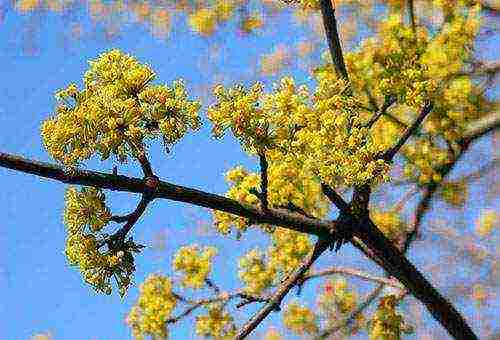

Technology and timing of pruning dogwood
In the first years of growth of the seedling, a crown is formed.... Fruiting culture does not depend on special pruning... All processes that are below the planned height of the trunk are removed. The height of the trunk with 5 - 7 shoots is recommended to be 50 - 70 cm.
During the growth of the fruit crop, damaged branches and small processes thickening the crown should be removed. When a fruiting plant reaches 20 years of age, rejuvenating pruning is carried out in early spring.
Shrub planting
You need to plant dogwood in the fall. Each region has its own time when it is necessary to start this work. Popular wisdom recommends: the most effective planting occurs at the time when the poplar began to shed its leaves. In the spring, in the middle lane, it is very difficult to guess the right time for planting: the period when the soil is already warming up, and the buds have not yet begun to bloom. Dig holes with a depth and diameter of 80 cm at a distance of about 5 m from one another. Drive a stake into the ground from the direction of the prevailing winds, it will hold the tree in windy weather. Place the seedling behind the stake and bury it so that the root collar is a few centimeters above ground level. After watering and rains, the soil will settle, and it will take the desired position. First, pour fertile soil from the top layer into the hole so that the roots take root in the nutrient medium. Spill the soil well with water and tie the trunk to a peg. After a heavy downpour, make sure that the depth is calculated correctly: if the planting is high and the root collar is above the ground, the bush will develop poorly, and when deepened, it will give many root suckers, which will make it difficult to care for the plant. Some gardeners believe that all branches of the seedling need to be shortened by a third, others do not, and the tree takes root well. What to do is up to you, you can cut off the shoots on one bush, but not on the other and see how it is best. Do not forget that each site has its own soil, its own microclimate, therefore, the cultivation of crops takes place according to different schemes. Any recommendations should be checked in practice, each owner should have individual experience and knowledge about what kind of care his pets need.
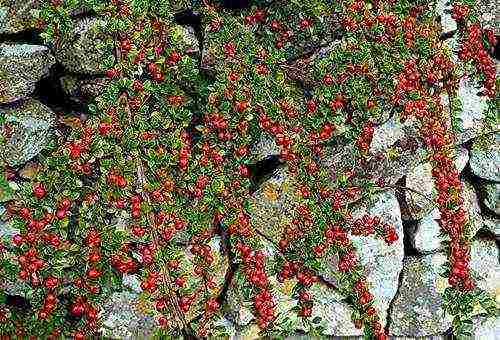

Does an unpretentious dogwood need care
Keeping a dogwood tree is easy, but you can make the job even easier if you cover the ground around the trunk with a thick layer of mulch after planting. Make sure that the root collar is not covered, it should be in the air. Weeds will not break through the compost or mowed grass, the soil there will always be loose and moist. Dogwood roots are mainly located in the topsoil. In dry weather, you need to water the bushes, and it is better to organize a drip irrigation system. From May to autumn, the shrub works hard: energy is spent on the formation of fruits, and on growing young shoots. For these processes to take place correctly, the plant needs a sufficient amount of nutrients. Use fertilizers with a predominance of nitrogen and phosphorus until mid-summer, and potassium is needed in the second half of the season.In nature, dogwood prefers calcareous soils, because without calcium, the growth and formation of fruits are impossible. If this component is not in the soil of your site, add it to the top dressing. Frequent pruning of dogwood is not necessary. Before the growing season, only diseased, dry and broken branches should be cut to prevent them from becoming a source of infection. To give shape to a young plant, leave a short, about half a meter, stem and 5 skeletal branches. To rejuvenate plants over 20 years old, prune off branches that are 4 years old. In their place, new fruiting shoots will appear. The tree tolerates shearing well, and if you want to use it as an ornamental plant, you can give the crown an unusual shape. Dogwood is resistant to diseases and pests, and proper care will make the bush even stronger. And yet, do not forget to inspect the plant from time to time in order to notice problems in time. Powdery mildew - white bloom on the shoots. Treat the plant with colloidal sulfur. Rust - yellow spots on the leaves. The bush must be sprayed with Bordeaux liquid. Spotting. Bordeaux liquid will also help from this disease. Snail worm. The pest is destroyed with lime. The caterpillar is a polychrome. Sprinkle the dogwood with Parisian greens.


Useful properties of dogwood seeds
Dogwood seeds are also endowed with useful properties. A third of their composition is healing oils:
- they promote wound healing;
- suppress inflammation;
- destroy bacteria.
They are ground to a powder and used to treat the gastrointestinal tract, diarrhea, hemorrhoids. Positive dynamics is observed from the first or second intake of the drug. Dried fruits with seeds are useful for the treatment of hemorrhoids (eat 10-20 berries daily).
There are no side effects, the properties of the powder "do not conflict" with any traditional drug from the pharmacy. Therefore, it can be used in parallel with medications prescribed by a doctor.
For people who are contraindicated in caffeine, the nucleoli of the bones are useful. They are roasted, ground, and used as a coffee substitute.
Output
Dogwood can be grown and harvested not only in the south, but also in the northern regions. If the plant is properly cared for, it will bear fruit for up to 100 years. You can leave one trunk and grow the dogwood as a tree, or not trim the lower shoots and get a bush. In order for the dogwood to develop well and bear fruit, you need to choose the right varieties and planting method. Growing from seeds is a laborious task, but sometimes only this method is possible in the northern area. Good results are obtained by budding: on a winter-hardy rootstock, you can try to grow shoots of delicate varieties. Dogwood is tenacious and unpretentious, it will endure any conditions. Does the plant need care? If you want to eat enough berries, do not forget about watering and feeding. You can leave the bush completely unattended, but it will not give good yields. Love your green pets, and your site will always be beautiful and productive.
Dividing the bush
This fast propagation method is used when a large mature plant needs to be transplanted to another location. One bush is divided into many new seedlings.
Reproduction by division can be done twice a year:
- before the buds ripen in early spring;
- late autumn.
Taking the plant out of the ground, it is cleaned of dry branches. The soil is carefully removed from the rhizome and the bush is divided into several parts. Each new, ready-to-plant specimen must have a stem and root. Having trimmed the rhizome, each part of the dogwood shrub is transplanted to its own separate, specially prepared place.
Any of the described methods is available and not difficult to implement. The main thing is to adhere to the rules while observing the temperature regime, watering and choosing the right place for planting a new bush. Then, after a certain time, you can get an excellent harvest of very useful dogwood berries.

